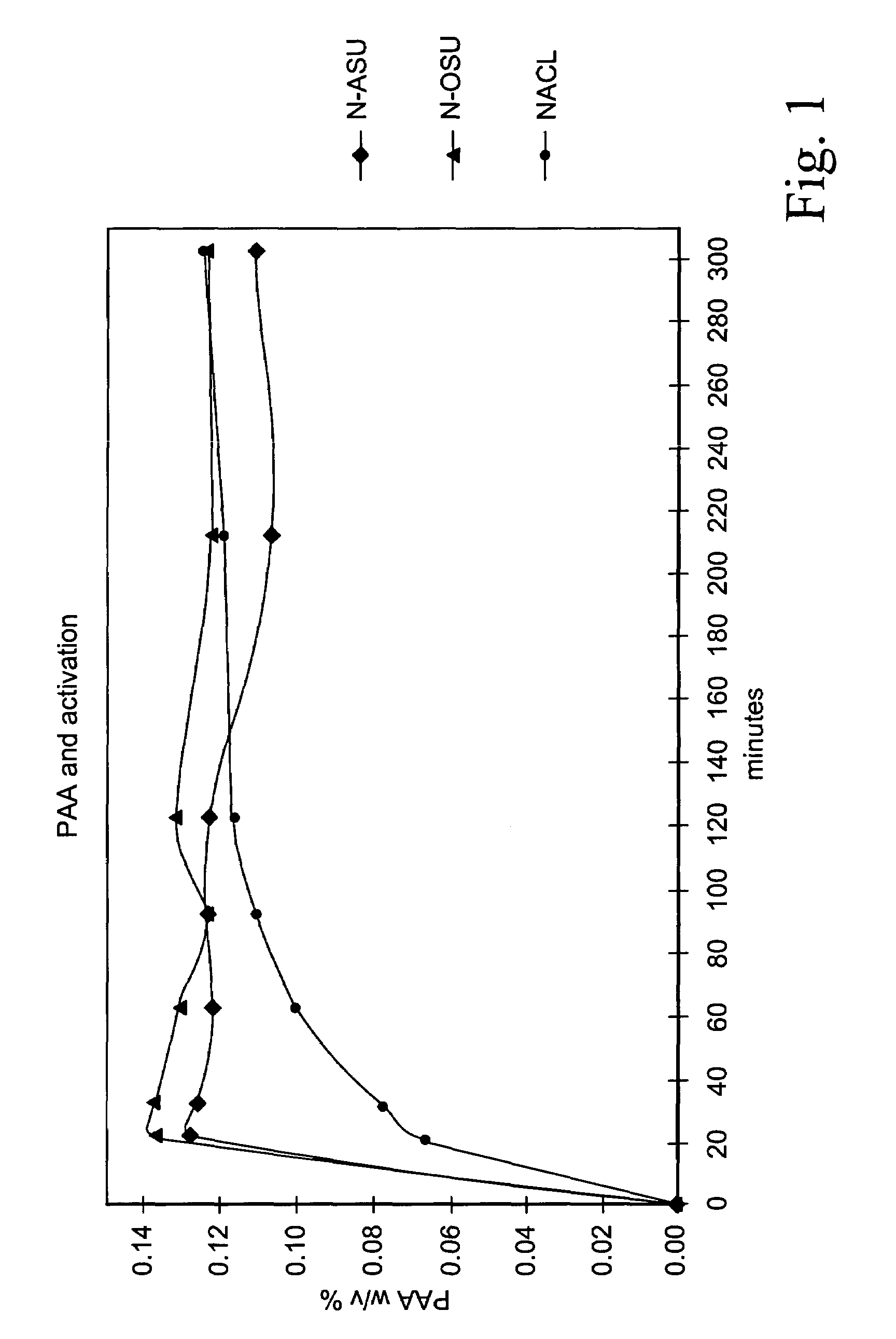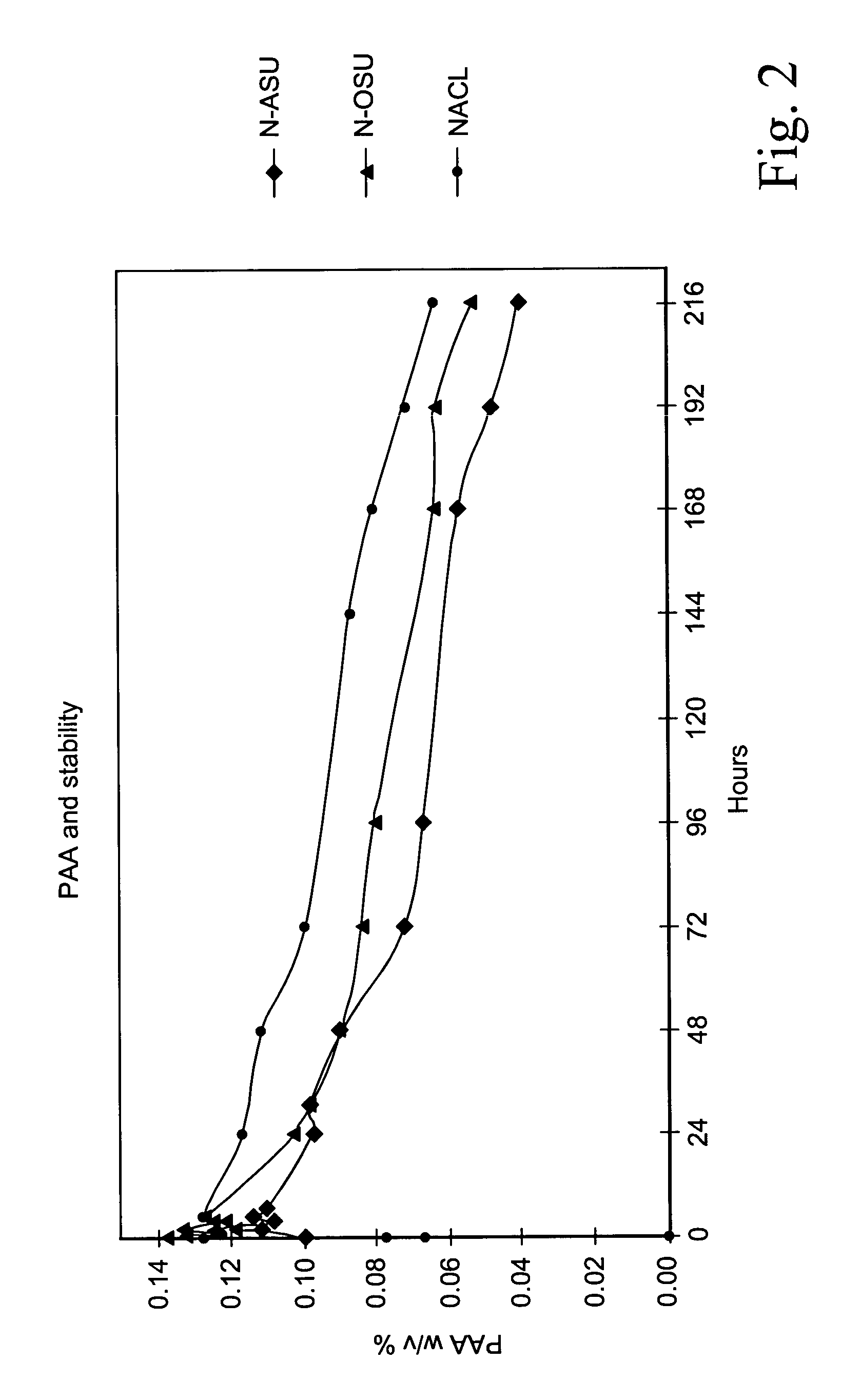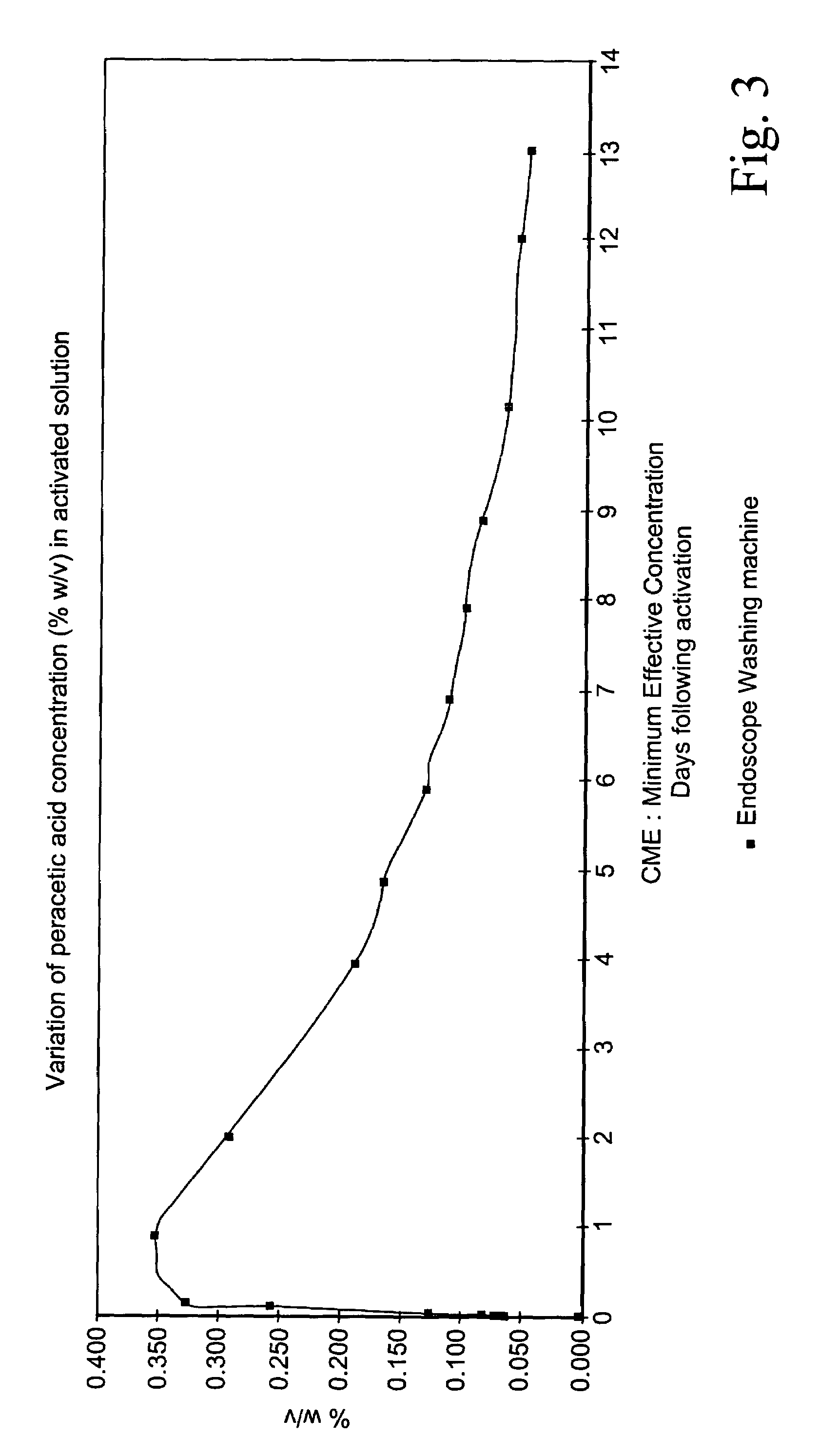Method of preparing organic peroxyacids
- Summary
- Abstract
- Description
- Claims
- Application Information
AI Technical Summary
Benefits of technology
Problems solved by technology
Method used
Image
Examples
Embodiment Construction
[0097]Search work was initially directed towards finding out the best N-acyl and / or O-acyl activator of all those available and disclosed in the prior art referred to above. The features sought for in this initial search were:[0098]a rapidly acting acylating agent (i.e. provided with an electrophilic carbonyl carbon) suitable for causing a perhydrolysis reaction due to electron-withdrawing effect on the carbonyl carbon and for providing a sufficiently high concentration of its respective peracid within short times (20–30 minutes) for the specified objects;[0099]a good conservation under standard storage conditions (at temperatures ranging from 20° and 40° C.).[0100]an ability to yield after activation an activated solution in which the organic peroxyacid concentration is as stable as possible.
[0101]The following five acetyl donating compounds were assessed at the outset:
[0102]1. N-acetoxysuccinimide
[0103]2. N-acetylsuccinimide
[0104]3. N-acetylcaprolactam
[0105]4. N,N,N,N-tetraacetyle...
PUM
 Login to View More
Login to View More Abstract
Description
Claims
Application Information
 Login to View More
Login to View More - R&D
- Intellectual Property
- Life Sciences
- Materials
- Tech Scout
- Unparalleled Data Quality
- Higher Quality Content
- 60% Fewer Hallucinations
Browse by: Latest US Patents, China's latest patents, Technical Efficacy Thesaurus, Application Domain, Technology Topic, Popular Technical Reports.
© 2025 PatSnap. All rights reserved.Legal|Privacy policy|Modern Slavery Act Transparency Statement|Sitemap|About US| Contact US: help@patsnap.com



